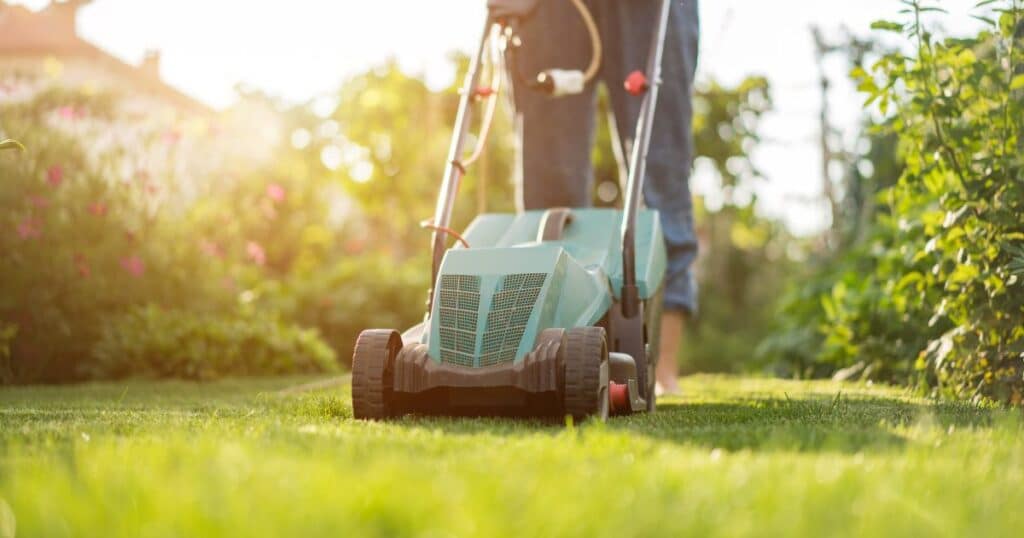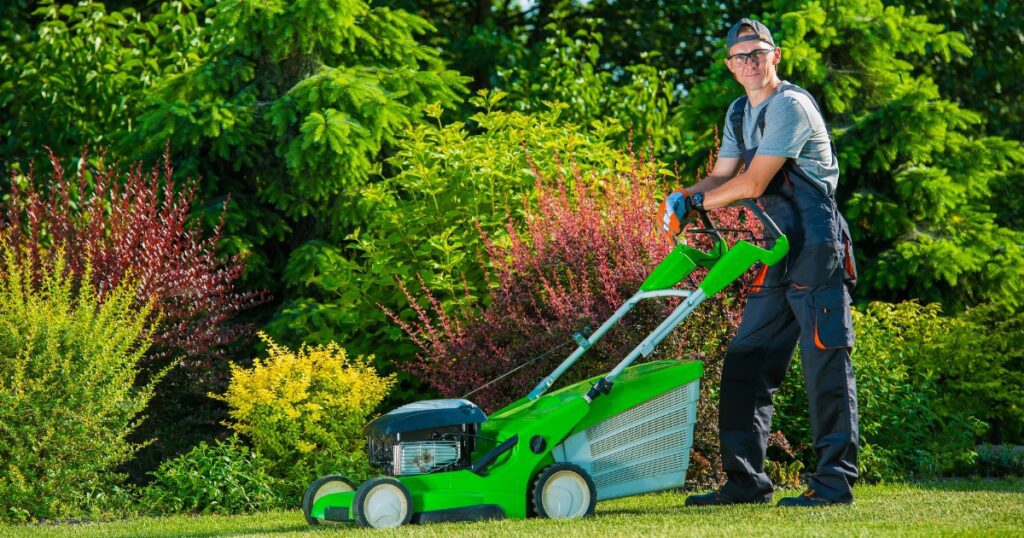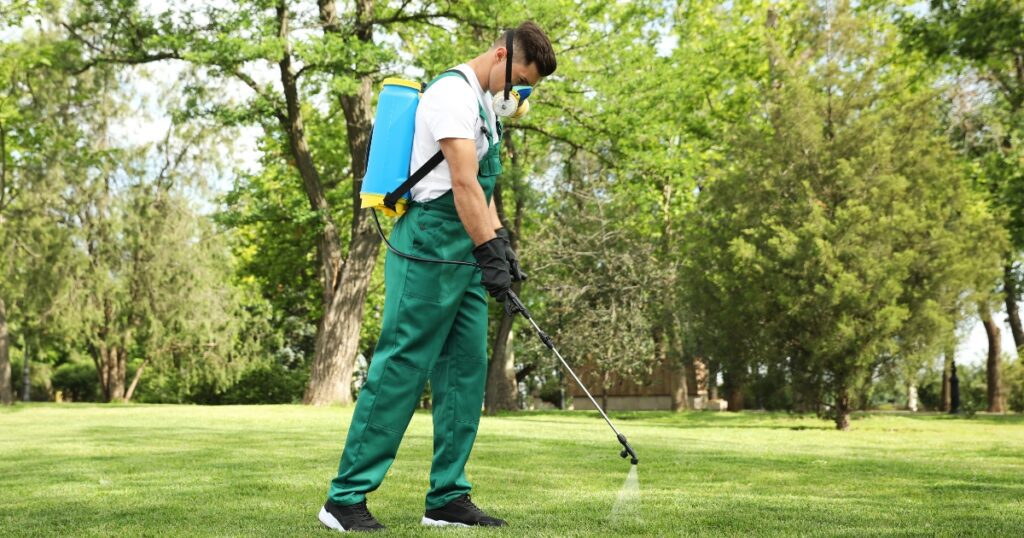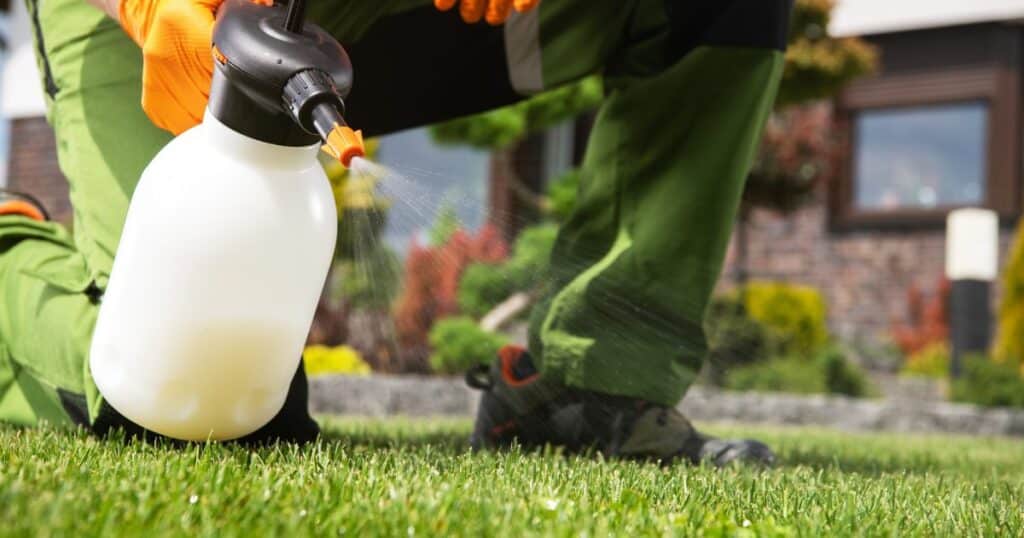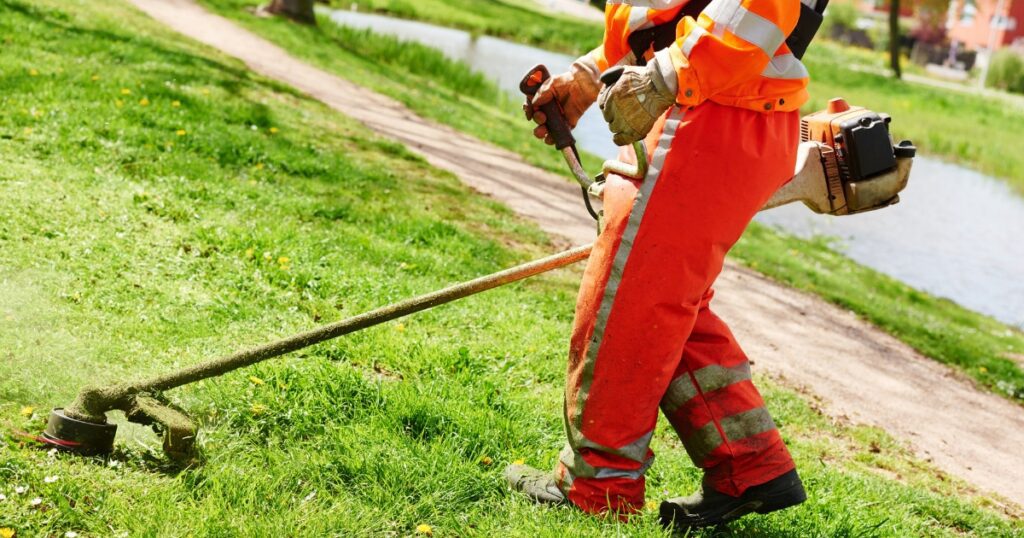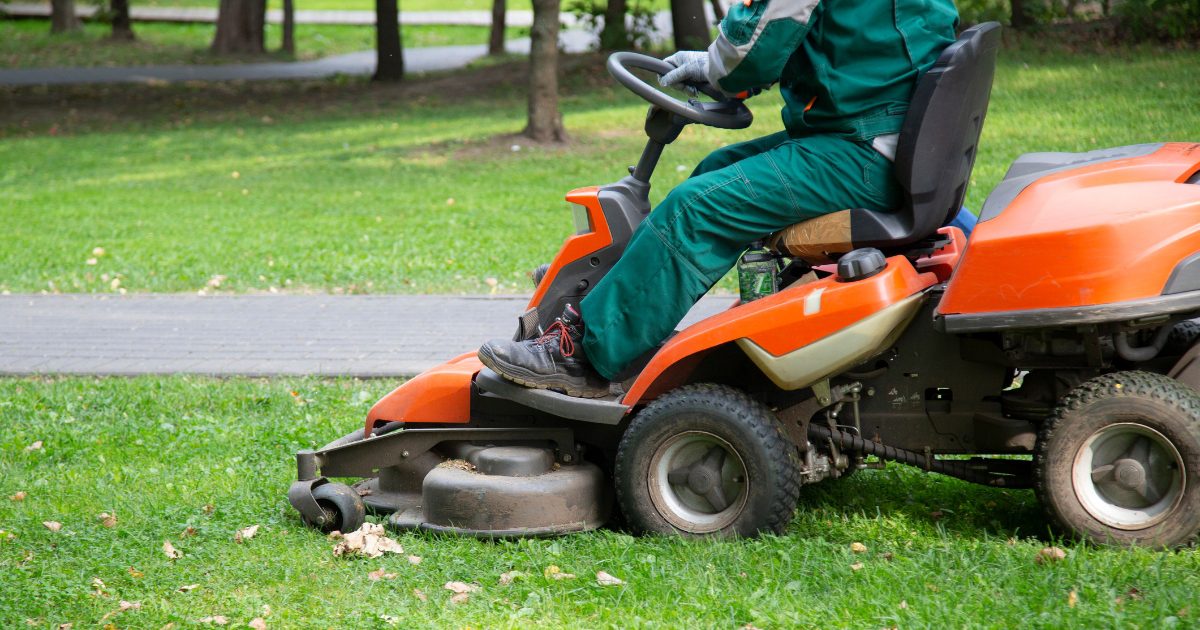
The Importance of Lawn Care Calendar Dallas
Dallas is known for its hot and humid summers, which can be tough on lawns. Neglecting lawn care can lead to a patchy, discolored lawn that detracts from the beauty of a property.
A well-maintained lawn not only adds curb appeal to a property but also provides many benefits, such as improved air quality, reduced heat island effect, and increased soil stability. In addition to the aesthetic benefits of lawn care, it also promotes healthy grass growth and prevents disease and pests.
A healthy lawn requires less water and fertilizer while staying green during droughts. Properly maintained lawns are also less likely to suffer damage from heavy foot traffic or extreme weather conditions.
The Purpose of the Lawn Care Calendar
The purpose of a lawn care calendar is to provide homeowners with a plan for maintaining their yards throughout the year. By following an annual schedule, homeowners can stay ahead of potential issues and keep their lawns looking lush and vibrant year-round. A well-planned calendar will include specific tasks to be performed at certain times of the year when they are most effective.
These tasks may include mowing, fertilizing, weeding, aerating, watering, overseeding, or pest control measures. Using a calendar ensures that these tasks are completed in a timely manner so that your yard looks its best no matter what time of year it is.
Additionally, implementing regular maintenance can save you money by reducing the need for expensive repairs or major renovations down the road. Now that we understand why lawn care is important in Dallas and what purpose a schedule serve let’s continue with detailed instructions on how to properly maintain your turf during each season, starting with Spring Lawn Care (March-May).
RELATED: Lawn Care Schedule Dallas Fort Worth
Spring Lawn Care in Dallas: A Guide to Fertilizing and Weed Control
Spring is an important season for lawn care in Dallas. After a long, cold winter, the grass is starting to come back to life, and it needs the right nutrients and care to thrive. One of the most important tasks during this time is fertilizing.
Fertilizing your lawn in spring helps promote healthy growth, strong roots, and improved color. Here are some tips on how to properly fertilize your lawn during spring:
– Choose the right fertilizer: Different types of fertilizers have different nutrient ratios that affect how they work best on different types of grasses. Make sure you choose a fertilizer that suits your specific type of grass and meets its nutrient needs.
– Apply the fertilizer at the right time: Spring is the optimal time for fertilization as it promotes healthy growth just before summer heat sets in. Apply fertilizer early morning or late afternoon when temperatures are cooler, as applying during peak heat can burn out your grass.
– Use proper application techniques: It’s important to apply fertilizer evenly across your lawn using a spreader machine or hand-held spreaders, depending on your yard size. Weeds can be an annoyance in any season but especially so during spring when conditions are perfect for them to establish themselves within a growing lawn.
Here’s how you can take proper steps toward weed control:
– Use pre-emergent herbicides: Pre-emergent herbicides prevent weeds from germinating before they have a chance to grow.
– Hand-pull weeds: If weeds have already sprouted, hand-pulling them before applying herbicides may help reduce their numbers.
– Apply post-emergent herbicides selectively: Post-emergent herbicides target existing weeds without harming surrounding plants
Tips for Mowing and Watering Your Lawn During Spring
Mowing and watering are also crucial aspects of lawn care in spring, as they can help to create a lush, healthy lawn. Here are some tips that will help you mow and water your lawn effectively: – Mow regularly: Regular mowing trains your grass to grow thicker and stronger.
Ensure that the blades of your mower are sharp to avoid tearing the grass, which can lead to diseases. – Water in the morning: Watering in the morning is important as it helps give your grass time to dry during the day.
This will help prevent fungal growth and other diseases. – Avoid overwatering: Overwatering can cause root rot, weaken grass and promote weed growth.
Water deeply once or twice a week instead of daily light watering sessions. Fertilizing and weed control are two of the most important tasks for spring lawn care in Dallas.
Applying proper techniques for both will keep your yard healthy, green, and flourishing all season long. Additionally, mowing regularly with sharp blades and watering in moderation will also contribute greatly towards your efforts for a beautiful yard this spring season!
Summer Lawn Care
Proper Watering Techniques
Summer in Dallas can be brutal, with temperatures regularly soaring into the 90s and above. To keep your lawn healthy during these hot months, it’s essential to water it properly.
The best time to water your lawn is early in the morning when the air is cool, and there is less wind. This will give your grass ample time to soak up the moisture before the heat of the day sets in.
It’s recommended to water deeply but infrequently, about an inch of water per week. Avoid overwatering, as this can lead to shallow root growth and make your lawn more susceptible to pests and diseases.
Pest Control
Summer is also a prime time for pests in Dallas lawns, such as chinch bugs, grubs, and armyworms. These pests can cause significant damage to your lawn if left unchecked.
One way to prevent pest infestations is by keeping your grass healthy through proper watering and fertilization techniques. Additionally, you can apply insecticides specifically designed for lawn pests or hire a professional company for regular pest control treatments.
Tips for Mowing
Regular mowing during summer helps keep your lawn healthy and looking its best. However, it’s important not to cut too much at once as this can stress out your grass and cause it to turn brown or even die off completely in some areas.
A good rule of thumb is never to cut more than one-third of the blade length at a time. Also, remember that mowing height should be adjusted depending on weather conditions – during summer months, when temperatures are high, raise the cutting height slightly higher than during cooler months.
Proper watering techniques, pest control measures, and careful mowing practices are essential components of summer lawn care in Dallas. By following these tips closely, you can keep your lawn healthy and vibrant throughout the hottest months of the year.
Fall Lawn Care
Preparing Your Lawn for Winter
As the temperatures begin to cool down, your lawn requires a different type of care than during the hot and dry summer months. Fall is the time to prepare your lawn for winter dormancy, ensuring that it will be healthy and ready for growth when spring arrives. Two critical tasks in fall lawn care include aeration and overseeding.
Aeration
Aeration is a process that relieves soil compaction and allows water, air, and nutrients to penetrate deep into the soil. This is important because compacted soil can prevent roots from reaching the necessary nutrients they need to thrive. To aerate your Dallas lawn properly, you should rent an aerator machine or hire a professional service that can take on this task for you.
When aerating your lawn, ensure that you are doing it during an active growing season so that grass can recover quickly from any damage done during the process. After aerating your lawn, it’s essential to allow grass clippings on top of the ground as they will decompose naturally, adding extra organic matter.
Overseeding
Overseeding entails planting new grass seed over existing turf to provide thicker coverage. This helps improve turf density and reduce bare spots in your lawn’s coverage areas.
Overseeding also helps introduce new grass types with better resistance against diseases or pests prevalent in Dallas lawns. To be overseeded effectively in the fall, begin by mowing your grass lower than usual before overseeding (1-1/2 inches).
This exposes more soil surface area allowing better seed-to-soil contact resulting in greater germination rates. Spread approximately 16 seeds per square inch of open soil surface area using hand-held broadcast spreaders or seed drills, followed by light raking over seeded areas to incorporate them into existing grass blades.
Mowing and Watering
During fall, you should gradually reduce the watering frequency to once a week as temperatures begin to drop. Mowing height should also be kept consistent with summertime at 2-1/2 to 3 inches, but it is essential to monitor the grass’s growth and adjust accordingly.
Overgrown grass can lead to pest infestations or diseases during winter, so ensure that your mowing blades are sharp and well-adjusted. Fall lawn care in Dallas requires special attention when preparing your lawn for winter dormancy.
Aeration and overseeding are two vital tasks that should not be skipped because they help improve soil penetration and densify turf coverage. Proper watering techniques should also be followed while keeping mowing heights consistent with summer times but adjusting them according to grass growth rates in this season of transition.
Winter Lawn Care
Maintaining Dormant Grass in Winter
During the winter months, grass in Dallas lawns becomes dormant as temperatures drop. While it may seem like the lawn doesn’t require any maintenance during this time, there are still some important steps that need to be taken to maintain the health and appearance of the grass. One key task is to remove any leaves or debris that accumulate on the lawn, as they can smother and kill dormant grass.
Use a leaf blower or rake to clear away debris. Another important step in maintaining dormant grass is to avoid walking on it whenever possible.
Foot traffic can damage and kill dormant grass blades, causing unsightly brown patches when spring arrives. If it’s necessary to walk across the lawn, try to stick to sidewalks or other solid surfaces instead.
Proper Maintenance Techniques for Dormant Grass
In addition to cleaning up debris and minimizing foot traffic, there are a few other maintenance techniques that can help keep dormant grass healthy during winter. One important step is to adjust your mower height so that the blades are set higher than usual. This will prevent scalp marks from forming on the lawn when you mow over it.
It’s also a good idea to reduce watering during winter months since most plants enter dormancy during these months – including our lawns! Watering should only be done if there has been no rain for several weeks or if unseasonably warm weather occurs.
Consider applying a slow-release fertilizer in November or early December before temperatures drop too low. This will provide essential nutrients for your turfgrass throughout the winter months and promote quicker spring green-up once temperatures rise again.
Tips for Mowing During Winter Months
While mowing may not be as frequent of a task during winter as other months of the year, there are still some tips worth noting. First, aim to only mow when the grass is dry. Wet grass can clump up and clog your mower’s blades, leading to uneven cuts or even damage to your equipment.
It’s also important to continue mowing regularly during winter months, albeit at a higher setting than in other seasons. This will help keep the lawn looking neat and tidy while promoting healthy regrowth in the spring once the weather warms up again.
Be sure to sharpen your mower blades before winter mowing begins. Dull blades can tear rather than cut through grass which opens up more pathways for diseases and pests that can harm dormant lawns.
Remember that caring for your lawn during the winter months is just as important as any other time of year! With a little bit of effort, you can ensure that your Dallas lawn stays healthy and beautiful throughout even the coldest months.
Frequently Asked Questions
Why you shouldn’t mow your lawn every week?
Mowing your lawn too frequently can cause stress to the grass and lead to a weakened lawn. It’s important to mow your lawn at the correct height and frequency for the type of grass and growing conditions in your area.
Can I fertilize my lawn every 2 weeks?
Fertilizing your lawn every 2 weeks is not recommended, as it can lead to over-fertilization and damage to your lawn. It’s important to follow the recommended fertilization schedule for your specific type of grass and soil conditions.
How do I get green grass in Texas?
To get green grass in Texas, you can fertilize your lawn with a nitrogen-rich fertilizer, water it regularly and deeply, mow it at the correct height, and control pests and weeds. It’s also important to perform soil testing and amend the soil with nutrients and organic matter if necessary.
What is the best lawn fertilization schedule?
The best lawn fertilization schedule depends on the type of grass and the climate of your area. In general, warm-season grasses should be fertilized in the spring and fall, while cool-season grasses should be fertilized in the fall and spring.
How do I know if my grass needs water?
You can tell if your grass needs water by looking for signs of stress, such as wilting or a change in color. You can also perform a “footprint test” by walking on the grass and observing whether the grass springs back up or stays flattened.
How often do you have to cut grass in Texas?
The frequency of mowing your grass in Texas depends on the type of grass and the growing conditions in your area. In general, warm-season grasses should be mowed every 7-10 days during the growing season, while cool-season grasses may need to be mowed more frequently. It’s important to mow your grass at the correct height for the type of grass and growing conditions in your area.
Conclusion
Following a lawn care calendar is important for maintaining a healthy and beautiful lawn in Dallas. Each season requires specific tasks to be performed, and performing them at the right time can ensure that your lawn remains healthy and lush year-round. By properly fertilizing and controlling weeds in the spring, watering and preventing pests in the summer, aerating, and overseeding in the fall, and maintaining dormant grass in the winter, you can maintain a beautiful lawn that will be the envy of your neighbors.
Remember to always follow proper techniques for mowing and watering throughout the year. Mowing too short or overwatering can actually harm your lawn.
Following best practices will keep your lawn looking its best. So take some time to create a personalized lawn care calendar for your Dallas yard.
With proper care and maintenance, you can enjoy a vibrant green space that enhances both your curb appeal as well as your quality of life. Happy gardening!


